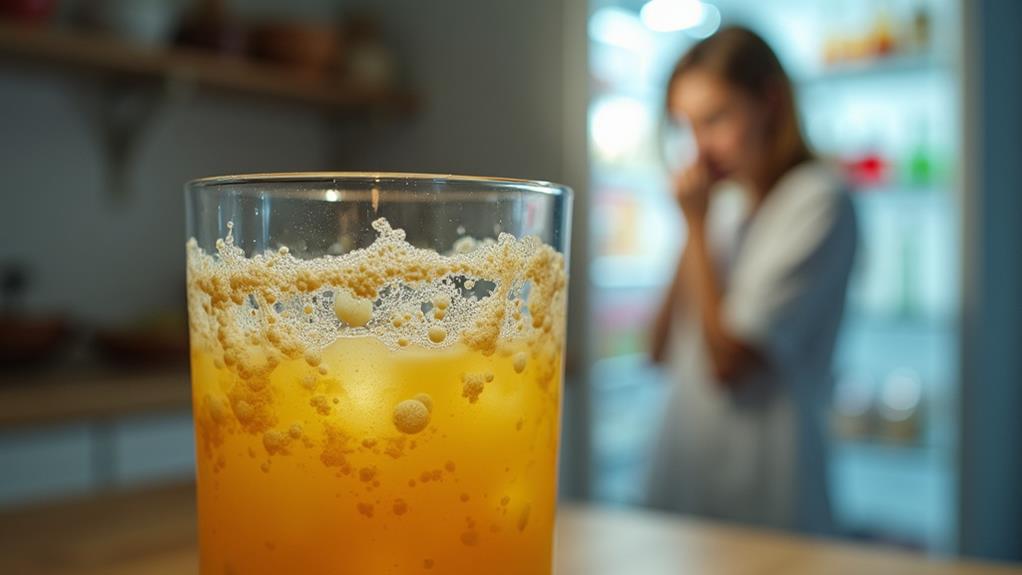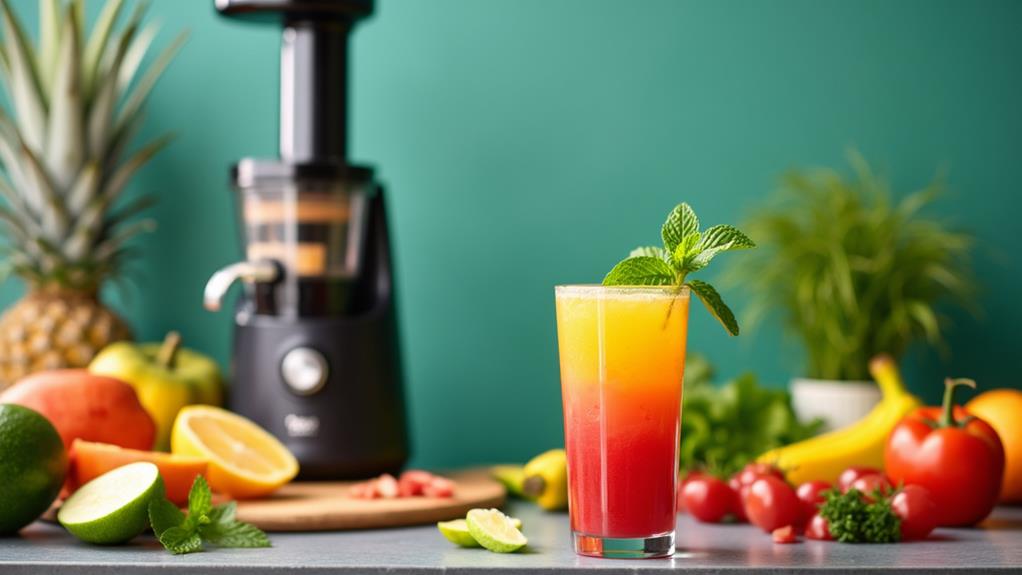Easy Methods to Juice Citrus Fruits
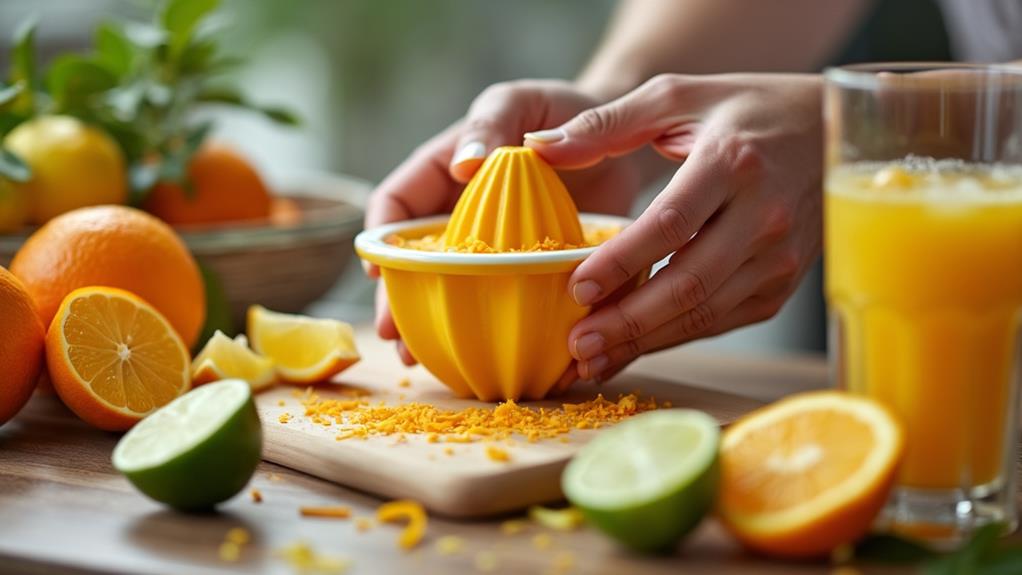
Juicing citrus fruits can be remarkably simple with the right techniques. Selecting and prepping the right citrus ensures maximum juice yield. Microwaving or briefly freezing the fruit softens the flesh, making it easier to extract juice. Beyond these methods, manual loosening techniques and advanced tools can further elevate your juicing experience.
Selecting the Right Citrus
To ensure you get the most juice from your lemons, start by assessing their weight. Heavier lemons generally yield more juice than lighter ones of the same size. Meyer lemons are particularly known for their high juice content, making them an excellent choice for maximum juice extraction.
Next, check the ripeness of the fruit. Choose lemons that are slightly soft to the touch, as this indicates they are ripe and ready to provide high-quality juice. Avoid lemons with bruises or blemishes, as these can affect both the flavor and juiciness.
Pay attention to small details when selecting your citrus. Opt for fruits that are free from visible damage and feel heavy in your hand. By following these guidelines, you can select the best citrus for juicing, ensuring fresher and tastier juice for all your needs.
Freezing Techniques
Freezing citrus fruits is a highly effective technique to enhance juice extraction and elevate your juicing experience. Freezing lemons causes the cell walls to break down, making it easier to extract juice once they are thawed. This softening can increase juice yield by approximately 10% compared to using refrigerated lemons.
To begin, thoroughly wash your lemons. You may also choose to slice them before freezing, which simplifies the juicing process later. Store the frozen lemons in a zip-lock bag for easy access. When you're ready to juice, simply thaw the lemons. Thawing not only facilitates easier squeezing but also increases the amount of juice extracted.
For portion control, consider freezing lemon juice in ice cube trays. This method keeps the juice fresh and readily available for recipes. Just pop the necessary number of cubes into a measuring cup, and you're good to go.
Here's a quick summary:
| Step | Description | Benefit |
|---|---|---|
| Wash Lemons | Clean thoroughly | Prepares for freezing |
| Slice Lemons | Optional but helpful | Easier juicing later |
| Freeze Lemons | Store in zip-lock bag | Convenience |
| Thaw Lemons | Before juicing | Improves juice release |
| Freeze Juice | Use ice cube trays | Portion storage |
Using these freezing techniques will streamline your juicing process and make it more efficient.
Microwave Method
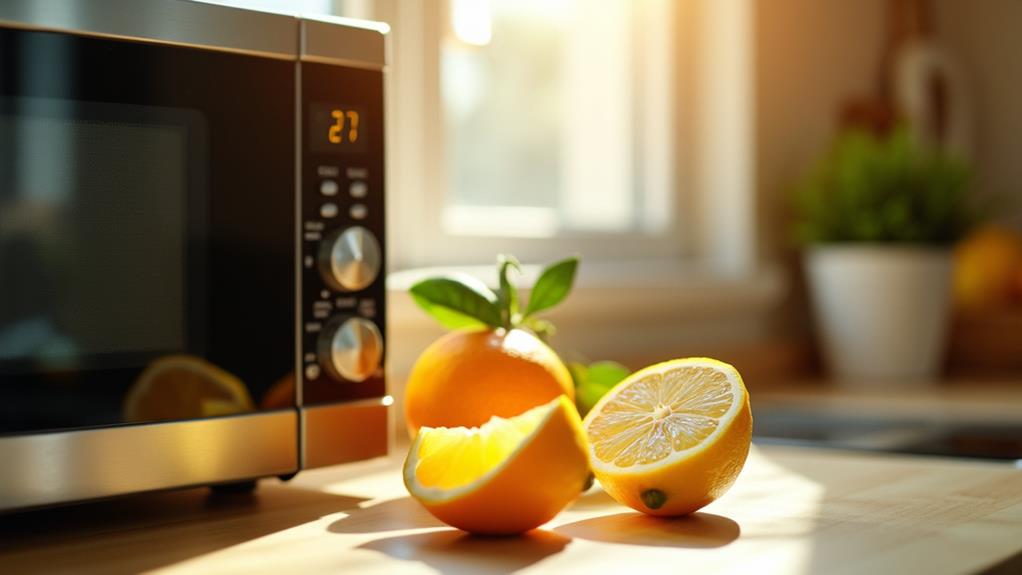
To increase your juice yield and save time, microwave lemons for 15-20 seconds. This method softens the fruit, making it easier to squeeze and can extract up to 10% more juice compared to using cold lemons. In under a minute, you'll be able to juice your citrus fruits more efficiently.
Time Efficiency
Microwaving lemons for 15-20 seconds can significantly enhance your juicing efficiency by softening the fruit and making it easier to extract juice. This method is particularly useful for juicing cold lemons, as it quickly brings them to an optimal consistency. Directly juicing cold lemons often results in less juice, but this microwave technique can yield approximately 10% more juice.
In terms of time efficiency, this technique is a game-changer. You can prepare lemons for juicing in less than a minute, saving valuable time in the kitchen. The microwave method is one of the fastest options for juicing citrus fruits. You only need a cutting board and a microwave—no extra tools required. These tips can streamline your kitchen routine and free up time for other cooking tasks.
On hectic days when every second counts, incorporating this microwave method into your juicing process can make a noticeable difference. It's a practical and efficient approach to maximize your time in the kitchen while ensuring you get the most out of your citrus fruits.
Juice Yield Boost
Boosting your juice yield from citrus fruits can be easily achieved using the microwave method. By microwaving lemons for 15-30 seconds, you soften the fruit, breaking down the cell walls to improve juice extraction. Softened lemons are easier to squeeze, resulting in a higher juice yield with less effort.
Here's a step-by-step guide:
- Microwave fresh citrus for 15-30 seconds to soften the fruit.
- Thaw frozen lemons and then microwave for about 30 seconds to achieve peak juiciness.
- Use a citrus juicer after microwaving to maximize juice yield.
- Enjoy approximately 10% more juice compared to juicing cold lemons directly.
This efficient method ensures you get the most out of your lemons. Microwave-softened fruit is easier to squeeze, leading to a higher juice yield, which is especially useful when you need fresh citrus juice quickly. By following these steps, you can enhance juice extraction and enjoy every drop of your citrus fruits. Whether you're making lemonade, adding a splash of lemon to a dish, or preparing a cocktail, this microwave method will ensure peak juiciness every time.
Manual Loosening
To boost your lemon's juice yield by up to 20%, roll it on the countertop to break down the cell walls. Applying more pressure with a rolling pin will further soften the internal membranes, making the fruit easier to squeeze. This technique requires no special tools and can be conveniently done at home.
Rolling Techniques
Ever wonder how to maximize the juice yield from your citrus fruits? One of the simplest and most effective methods is using rolling techniques. By rolling your lemons or other citrus fruits on a countertop, you can break down their cell walls, greatly increasing your juice yield by up to 20%. Apply gentle pressure with your palm while rolling the fruit back and forth to loosen the membranes inside, making it easier to extract the juice.
Key points to remember:
- Rolling techniques: Break down cell walls to optimize juice extraction.
- Juice yield: Increases by up to 20% with proper rolling.
- Temperature: Works on both cold and room temperature lemons.
- Additional methods: Combine with microwaving or cutting for even better results.
This technique requires no special tools and improves juiciness regardless of whether your lemons are cold from the fridge or at room temperature. For an even greater juice yield, consider combining rolling with other methods like microwaving or cutting before squeezing the juice.
Pressure Application
To enhance juice extraction, start by rolling lemons on a countertop to loosen the cells. Next, apply direct pressure using a rolling pin or a heavy object to further break down the cell walls, making juice pockets more accessible. This can increase juice yield by up to 20%.
Cut the lemon in half, then use a knife to create a few holes in the flesh. This step helps juice flow more freely when pressure is applied. Whether using a citrus press or your hands, these techniques ensure maximum juice extraction.
Even with electric juicers, preparing the fruit this way can make a significant difference. By making the fruit more pliable, you ensure efficient extraction of every drop. So, before juicing, take a moment to roll, press, and puncture the lemons. Your efforts will result in a richer, more abundant juice yield.
Membrane Softening
One effective technique for membrane softening in lemons is rolling the fruit on a countertop with your palm. By pressing down and rolling, you break down the cell membranes, which can increase juice extraction by up to 20%. This rolling action makes the lemon more pliable, thereby enhancing juicing efficiency.
For even better results, you can use a rolling pin or a similar object to press down on the lemon. This can further loosen the membranes, making it easier to extract the juice. Be sure to use a gentle touch; excessive pressure may cause the fruit to split rather than soften.
Benefits:
- Increased Juice Yield: Rolling can boost juice yield by up to 20%.
- Enhanced Efficiency: A more pliable lemon simplifies juice extraction.
- No Special Tools Needed: This method requires only common household items.
- Maximized Juice Extraction: Softening the membranes ensures you get the most juice possible.
Advanced Juicing
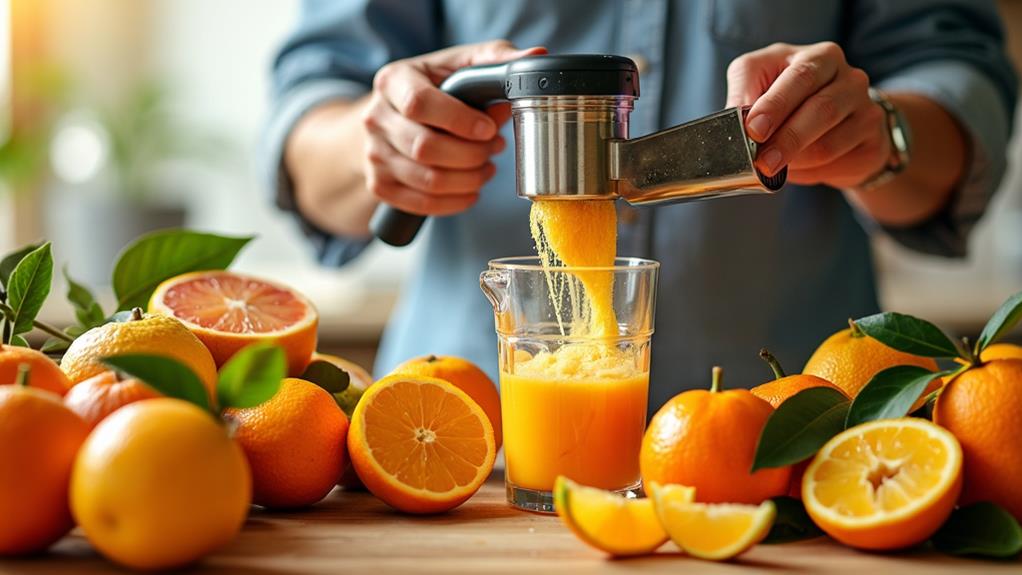
Unlock the full potential of your citrus fruits with advanced juicing techniques that go beyond the basics. For optimal juice extraction, start by cutting the fruit lengthwise to expose more juice vesicles. This simple adjustment can enhance juice output significantly. Before cutting the fruit, consider peeling the lemon. Removing the rind reduces resistance, making it easier to extract every drop.
Next, use a hand-held juice press correctly. Always place the cut side facing down; this ensures maximum juice extraction and minimizes seed contamination. If you're using a citrus reamer, apply gentle pressure and twist to get the most juice from each segment. Remember to strain the juice afterward to remove any pulp or seeds.
For even more lemon juice, try stabbing the lemon with a knife to create small holes before cutting it. This technique helps release juice without splitting the fruit in half. Alternatively, use a fork to poke and twist into the flesh of halved lemons, targeting stubborn sections for additional juice. By employing these methods, you'll enhance your juice output and enjoy fresh, vibrant citrus juice every time.
Storage Tips
Proper storage is essential for maintaining the freshness and flavor of your freshly squeezed lemon juice. Follow these tips to ensure your juice stays at its best.
First, store fresh lemon juice in airtight containers in the refrigerator, where it will keep for up to one week. For longer-term storage, freeze the juice in ice cube trays. Once frozen, transfer the cubes to a freezer-safe container for easy use in future recipes. Be sure to label containers with the date of extraction to track freshness and ensure optimal usage time.
Minimize light exposure by using opaque containers, as light can degrade the quality of your lemon juice over time. Additionally, always use clean utensils when handling your juice to prevent contamination, which can reduce shelf life and alter flavor.
Key points:
- Refrigerate fresh lemon juice in airtight containers for up to one week.
- Freeze juice in ice cube trays for long-term storage, then transfer to freezer-safe containers.
- Label containers with the extraction date to monitor freshness and usage.
- Use opaque containers to minimize light exposure and always handle with clean utensils.

